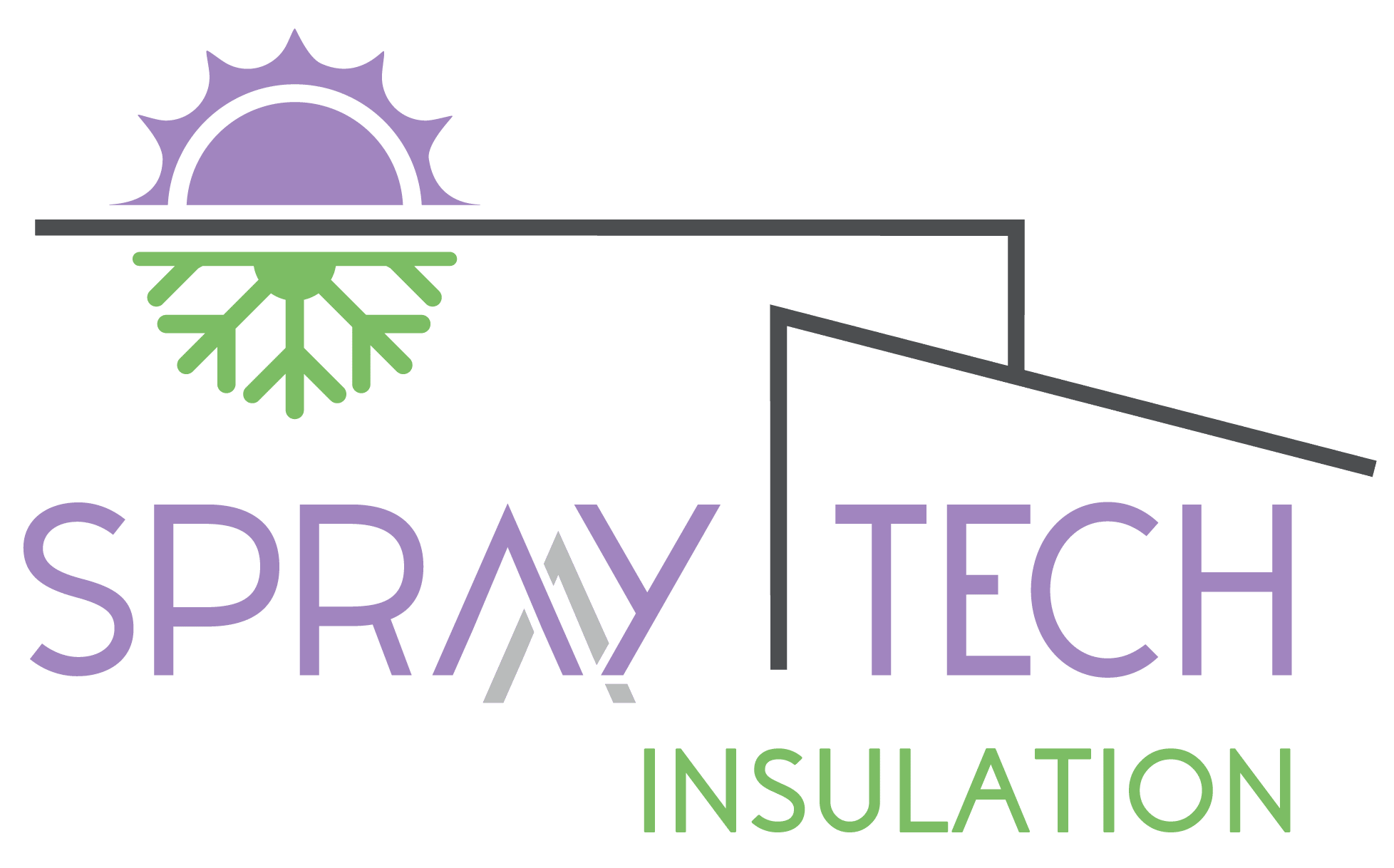
In Canada, the recommended insulation levels depend on your climate zone, with colder climates requiring higher R-values.
So how much insulation does your attic need?
Typically, your attic needs 16-20 inches of fiberglass or cellulose insulation in colder climates and 12-15 inches in more temperate climates. The depth needed will vary based on the insulation material used. Let’s dive deeper into the details.
Recommended Insulation Levels for Canadian Climates
In Canada, insulation requirements vary significantly depending on the climate zone. The colder the climate, the higher the R-value needed to keep your home warm and energy-efficient. According to Natural Resources Canada, here are the general recommendations:
Cold Climates (Northeast)
The building code in Ontario states that for new construction, the attic R-Value must be R60, and for renovations it must be R-50. This translates to:
- Fiberglass Insulation: 16-20 inches
- Cellulose Insulation: 16-20 inches
Importance of Higher R-Values in Cold Climates
Higher R-values are essential in colder climates to minimize heat loss and maintain indoor comfort. Proper insulation helps reduce energy consumption and heating costs, contributing to a more sustainable and economical home.
Temperate Climates (Parts of British Columbia)
For milder climates, like certain areas in British Columbia, the recommendation is an R-value of R-38. This equates to:
- Fiberglass Insulation: 12-15 inches
- Cellulose Insulation: 12-15 inches
Balancing Insulation Depth and Energy Efficiency
In temperate climates, achieving the right balance between insulation depth and energy efficiency is key. While the R-value requirements are lower, proper insulation still plays a significant role in reducing energy bills and enhancing indoor comfort.
For more details, refer to this resource.
Insulation Material Types and Depths
The type of insulation material you choose will affect the depth required to achieve the recommended R-value. Here’s a breakdown:
Loose-Fill Fiberglass
Loose-fill fiberglass is a popular choice for attic insulation due to its ease of installation and effectiveness.
- R-38: Requires about 14 inches
- R-60: Requires about 20 inches
Benefits of Loose-Fill Fiberglass
Loose-fill fiberglass provides excellent coverage and can easily fill gaps and irregular spaces, ensuring a more uniform insulation layer. It’s also relatively affordable and widely available.
Cellulose Loose-Fill
Cellulose insulation is an eco-friendly option made from recycled materials like newspapers and cardboard.
- R-38: Requires about 12 inches
- R-60: Requires about 17 inches
Advantages of Cellulose Insulation
Cellulose insulation is treated with boric acid, making it resistant to fire, mold, and pests. Its dense composition also helps in better air sealing and soundproofing compared to some other insulation types.
Rigid Foam Boards
Rigid foam boards offer high insulation values with minimal thickness, making them ideal for spaces where depth is a constraint.
- R-38: Requires about 6 inches
- R-60: Requires about 8 inches
Efficiency of Rigid Foam Boards
Rigid foam boards provide excellent thermal resistance and structural support. They are also moisture-resistant, which helps prevent mold growth and water damage in the attic.
Installing Loose-Fill Insulation
When adding loose-fill insulation over existing insulation, it’s essential to follow specific steps to ensure effective coverage and performance. Here’s how you can do it:
Using Depth Markers
Depth markers should be nailed to the joists at regular intervals to ensure the insulation is applied evenly across the attic space.
Ensuring Even Coverage
Depth markers help in maintaining consistent insulation depth throughout the attic, preventing areas with inadequate or excessive insulation, which could compromise energy efficiency.
Installing Insulation Baffles
Baffles should be installed at the eaves to allow for proper attic ventilation. This ensures that airflow is maintained, preventing moisture buildup and related issues.
Importance of Proper Ventilation
Proper ventilation in the attic prevents moisture accumulation, which can lead to mold growth and structural damage. Baffles help in maintaining this critical airflow.
Maintaining Clearance Around Recessed Lights
A 3-inch clearance around recessed lights should be maintained unless the lights are IC-rated (Insulation Contact rated). This prevents potential fire hazards and ensures safety.
Safety Measures for Insulation Installation
Maintaining clearance around light fixtures and other heat-producing elements is crucial to prevent fire risks. Ensuring these safety measures can protect your home while enhancing insulation efficiency.
For more guidance, check out this Home Depot guide.
Sealing Air Leaks and Insulating the Attic Hatch
Before adding new insulation, all air leaks should be sealed, and an insulated attic hatch should be installed. This step is crucial to maximize energy efficiency and prevent heat loss.
Benefits of Sealing Air Leaks
Sealing air leaks helps in maintaining a consistent indoor temperature, reducing energy bills, and preventing drafts. It’s a vital step in ensuring the overall effectiveness of your attic insulation.
The Benefits of Spray Foam Insulation
While traditional insulation materials like fiberglass and cellulose are effective, spray foam insulation offers superior performance. Spray foam insulation provides an airtight seal and higher R-values with less material. For instance, closed-cell spray foam insulation has an R-value of around R-6 per inch, which means achieving the recommended R-60 only requires about 10 inches of spray foam.
Why Choose Spray Foam Insulation?
- Superior Insulation: Higher R-value per inch compared to traditional materials.
- Air Sealing: Creates an airtight barrier, reducing air leaks and improving energy efficiency.
- Moisture Control: Acts as a vapor barrier, preventing moisture infiltration and mold growth.
- Durability: Provides structural reinforcement and has a longer lifespan.
Enhanced Energy Efficiency with Spray Foam
Spray foam insulation’s superior air sealing and higher R-value per inch contribute to significant energy savings and improved indoor comfort. It’s an excellent investment for long-term efficiency.
At Spray-Tech, we recommend a hybrid system of spray foam and cellulose in standard attics to most of our customers. This system ensures you have the airtight sealing benefits of spray foam, and the cost-effectiveness of cellulose of fibreglass.
If you’re considering upgrading your attic insulation, Spray-Tech Insulation specializes in high-quality spray foam insulation services. Contact us to learn more about the benefits of spray foam and how it can enhance your home’s energy efficiency.
The amount of insulation required in your attic depends on your climate zone and the type of insulation material used. In colder climates, aim for 16-20 inches of fiberglass or cellulose insulation to achieve an R-value of R-49 to R-60. In more temperate climates, 12-15 inches will suffice for an R-value of R-38. Consider using spray foam insulation for its superior performance and additional benefits.
Frequently Asked questions about thickness of Attic Insulation
1. Can You Have Too Much Insulation in Your Attic?
Yes, it is possible to have too much insulation in your attic. Over-insulating can lead to diminished returns, where the additional insulation does not significantly improve energy efficiency but does increase costs. Additionally, too much insulation can restrict ventilation, leading to moisture problems and potential mold growth. It’s essential to achieve the recommended R-value for your climate zone without exceeding it excessively.
2. How Thick Should Attic Insulation Be in Ontario?
In Ontario, which experiences cold winters, the recommended R-value for attic insulation is between R-49 and R-60. This typically translates to:
- Fiberglass Insulation: 16-20 inches
- Cellulose Insulation: 16-20 inches
- Spray Foam Insulation: About 8.5 to 10 inches for closed-cell spray foam (with an R-value of R-6 to R-7 per inch)
3. Should an Attic Be Fully Insulated?
Yes, an attic should be fully insulated to ensure maximum energy efficiency and comfort. Insulating the entire attic space, including the floor and any walls or ceilings that separate conditioned and unconditioned spaces, helps prevent heat loss and maintain consistent indoor temperatures. Proper insulation also reduces energy consumption and heating costs.
4. How Do I Know If I Have Enough Insulation in My Attic?
To determine if you have enough insulation in your attic, you can:
- Measure the Depth: Use a ruler or measuring tape to measure the depth of the existing insulation. Compare it to the recommended levels for your area.
- Check for Even Coverage: Ensure the insulation is evenly distributed without any gaps, voids, or compressed areas.
- Look for Signs of Insufficient Insulation: Drafts, cold spots, high energy bills, and ice dams in winter are indicators that you may need more insulation.
- Professional Inspection: Consider having a professional insulation contractor assess your attic. They can provide expert advice and recommendations based on the specific needs of your home.
5. What Is the Thinnest Insulation with the Highest R-Value?
Spray foam insulation, particularly closed-cell spray foam, is known for its high R-value per inch, making it the thinnest insulation with the highest R-value. Closed-cell spray foam has an R-value of around R-6 to R-7 per inch. This means you can achieve significant thermal resistance with less material compared to traditional insulation types.
Ready to improve your home’s insulation and start saving on energy bills? Request a quote from Spray-Tech Insulation today and experience the benefits of insulating your attic.
continue reading

